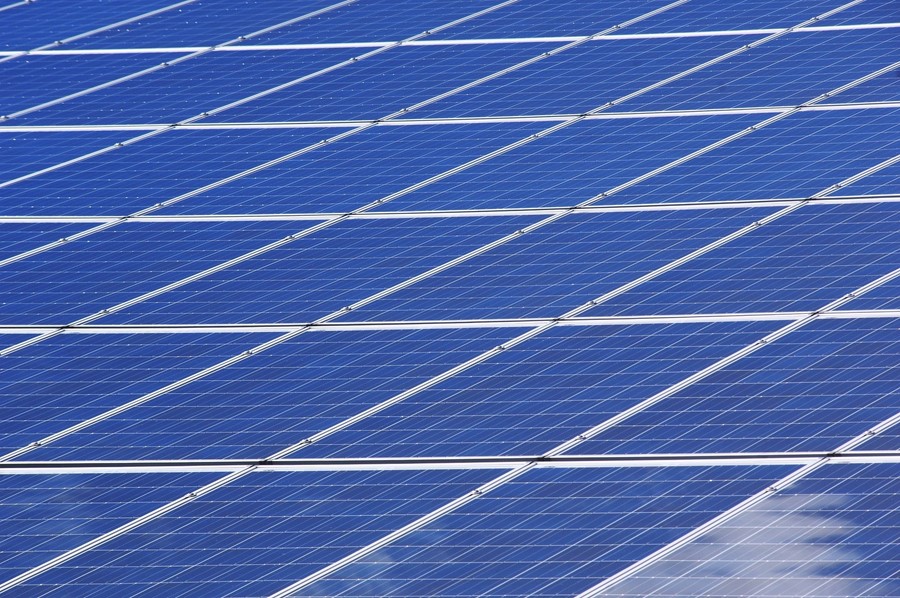Graphene for greener energy
We are celebrating Energy Efficiency Day by reviewing our contributions to the United Nations’ Sustainable Development Goal (SDG) 7: to ensure access to affordable, reliable, sustainable and modern energy for all.
From our establishment of the world’s first graphene-enabled solar farm in Greece, to our development of prototype graphene-enhanced lithium ion batteries, many projects enabled by the Graphene Flagship – from small scale to large – strive to achieve a greener, more sustainable society.
To cope with the ever-increasing global demand for energy, Graphene Flagship researchers are searching for new renewable and sustainable options. Graphene-enabled batteries, supercapacitors, solar cells and other new energy-saving solutions could bolster the European Union's efforts to reduce our dependence on fossil fuels.
Two of our Work Packages, dedicated to Energy Generation and Energy Storage, and several of our Spearhead Projects address SDG 7 to ensure access to affordable, reliable, sustainable and modern energy for all.
Creating the world's first graphene-enabled solar farm
The Graphene Flagship's Solar Farm Spearhead Project established the world's first graphene-enabled solar farm in Crete, Greece. In 2019, our Italian partners the Italian Institute of Technology (IIT), the University of Rome Tor Vergata and spin-off BeDimensional collaborated to produce large-area graphene-enriched perovskite solar cells, which achieved excellent power conversion efficiencies of 15.3%.
Now, our industry-led GRAPES Spearhead Project includes partner companies such as Greatcell Solar and Siemens, and aims to surpass this figure with new solar cell configurations. Beyond flexibility, transparency and low-light responses, graphene-enabled solar cells could reduce the cost of photo-voltaic energy below €20/MWh – cheaper than fossil fuels.
Saving weight, fuel and energy in cars and planes
Lightweight graphene-based composites can save significant amounts of energy in the automotive and aerospace industries. An industrial collaboration between partner companies Avanzare, Spain, and Nanesa, Bioage SRL, SPAC SpA and Fiat-Chrysler Automobiles, Italy, aims to replace the metal in conventional vehicle dashboards with graphene-based materials. The Spearhead Project G+BOARD will reduce the weight of vehicles, lowering their fuel consumption and CO2 emissions.
In addition, our Spearhead Project GICE, which comprises several key partners in the aeronautics industry, including Airbus and Sonaca, is studying graphene-enabled systems to remove ice or prevent ice accumulation in helicopters and planes. Thanks to the outstanding properties of graphene, thermoelectric de-icing or anti-icing systems can be lighter and more fuel-efficient, saving up to 90% of the energy required for conventional hot air alternatives.
Greener technologies for energy storage
Worldwide demand for battery-based energy storage will significantly increase by 2025, and graphene and layered materials could play a vital role in meeting this higher demand.
Due to its light weight and high surface area, electrical conductivity, chemical stability and mechanical flexibility, graphene can increase the energy capacity, charge rate and nourishing stability of lithium-ion batteries. In practice, this means graphene-enabled batteries for electric vehicles, mobile phones, laptops and more could have longer lifespans and faster charge times.
The Graphene Flagship Spearhead Projects Batteries and GreenBAT aim to provide innovative energy storage solutions to significantly increase the energy density of lithium-ion and post-lithium batteries – not only for portable and automotive applications, but also for the decentralised storage of renewable energy.
Pairing silicon and graphene
In March 2020, Graphene Flagship researchers at VARTA Micro Innovation GmbH, Austria, and BeDimensional and the Istituto Italiano di Tecnologia (IIT), Italy, announced a new prototype of graphene-enabled lithium-ion batteries with capacities more than 30% higher than any currently available alternative. With graphene, batteries can overcome some of the mechanical limitations of silicon. Christoph Stangl, from VARTA Micro Innovation GmbH, has a clear goal: "Now, we want to quickly push this exceptional battery technology towards commercialisation."
When it comes to sustainability, be it in terms of green energy, clean water or beyond, the future of graphene and layered materials is bright. Thanks to the Graphene Flagship's push for innovation, we are confident that graphene and layered materials will have a vital role to play in the move to a sustainable future.

Graphene Flagship researchers are searching for new renewable and sustainable energy generation and storage solutions, which could bolster the EU's efforts to reduce our dependence on fossil fuels.
Science Writer, Graphene Flagship




